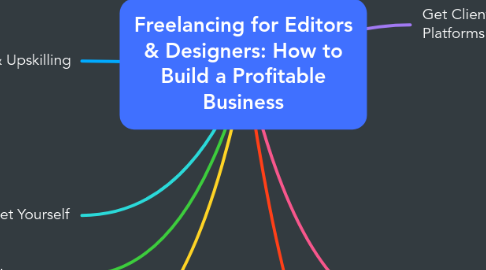Freelancing for Editors & Designers: How to Build a Profitable Business
저자: Amit Kumar


1. Improve Your Workflow & Communication
1.1. Use Trello, Notion, or ClickUp for project management.
1.2. Communicate clearly with clients via email, Slack, or Zoom.
1.3. Create contract templates to protect your work and set expectations.
2. Keep Learning & Upskilling
2.1. Stay updated with design trends and tools like Figma, Adobe Suite, Blender, After Effects.
2.2. Take online courses on Domestika, Skillshare, or Udemy.
2.3. Follow industry leaders and engage in design/editing communities.
3. Be Consistent & Market Yourself
3.1. Post consistently on LinkedIn and Instagram (behind-the-scenes, projects, tips, process videos).
3.2. Engage with potential clients, industry professionals, and other freelancers.
3.3. Use SEO & hashtags (e.g., #freelancedesigner #videoeditorforhire #uidesign).
4. Work for Free if Neccessary
5. Harsh Truths About Freelancing
5.1. Skill Alone Isn’t Enough
5.1.1. think like strategists, solve problems, and take initiative instead of just following instructions.
5.2. Effort & Initiative Define Your Value
5.2.1. take resposibilty and work extra than expected
5.3. Understand What Clients Actually Want
5.3.1. unke poochne se pehle unhe unki solution do, if they're putting more efforts just to get work done from you then you're in danger.
5.4. Job Security is a Myth
5.4.1. be an assest not a burden, client realtions is everything. try to drive more impact
5.5. You need to very good in one thing that nobody can Deny your services.
5.5.1. be available, be productive, attention to details, take care of them they're paying you
